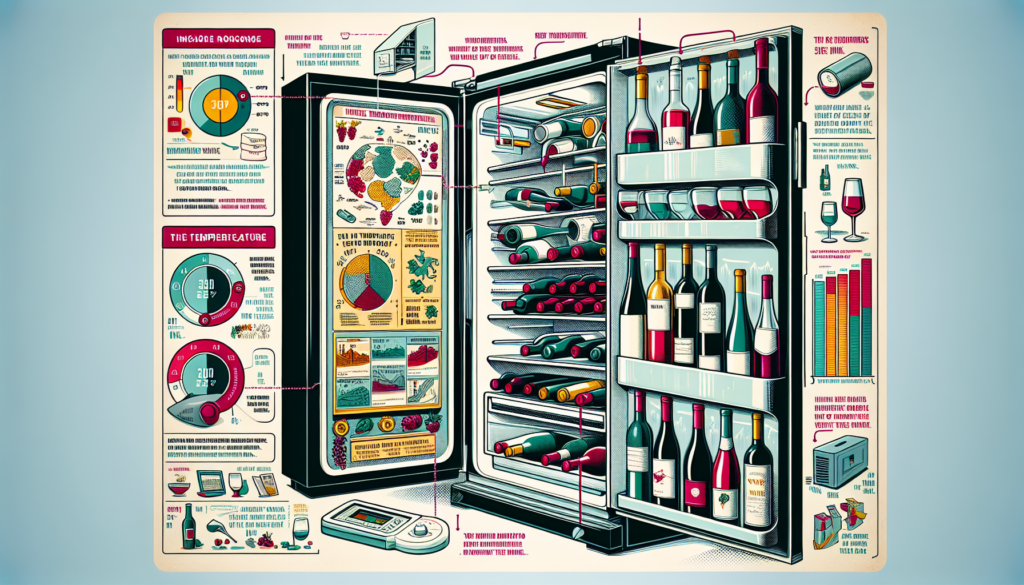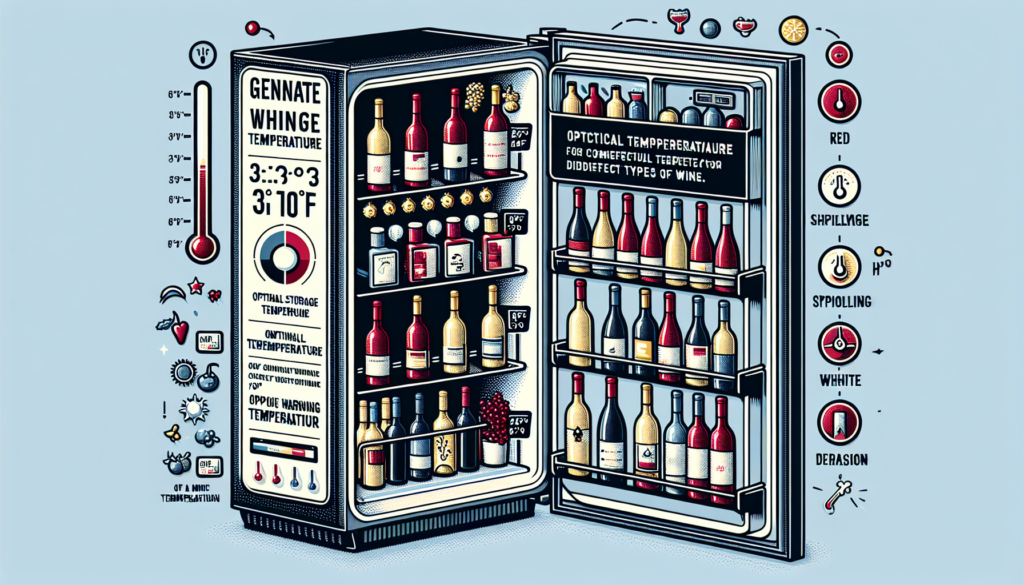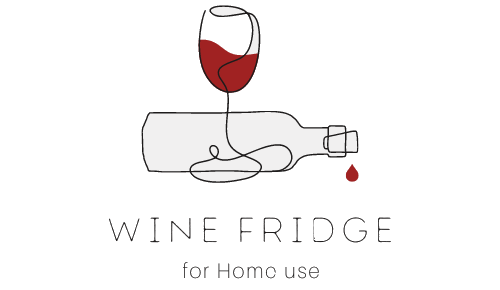Imagine always enjoying a perfectly chilled glass of wine, no matter the occasion. The secret behind achieving this level of wine perfection lies in the wine fridge temperature. It’s not just about storing your wine, it’s about creating the perfect environment that will enhance its flavors and aromas. In this article, you’ll discover the ideal temperature for your wine fridge and the impact it has on the taste of your favorite wines. So, get ready to elevate your wine experience to a whole new level and become a true wine aficionado. Cheers to that!
Choosing the Right Temperature
When it comes to wine storage, temperature is a crucial factor that can greatly impact the quality and taste of your wine. Choosing the right temperature for your wine fridge is essential to ensure that your bottles age gracefully and maintain their intended flavors. Whether you are a casual wine enthusiast or a seasoned collector, understanding the ideal temperature for wine storage is key to preserving the integrity of your cherished bottles.
Ideal Temperature for Wine Storage
The ideal temperature for wine storage falls within a specific range that allows the wine to mature and develop its flavors over time. Generally, wines should be stored at a temperature between 45 to 65 degrees Fahrenheit (7 to 18 degrees Celsius). Within this range, different types of wines thrive at slightly different temperatures, which we will explore in more detail later on. It is important to note that consistency in temperature is paramount to maintaining the quality of your wine.
Impact of Temperature on Wine Quality
Temperature plays a crucial role in preserving the quality and taste of wine. If stored at improper temperatures, your precious bottles are at risk of spoilage and oxidation, which can lead to a loss of flavor and aroma. Wine is a delicate beverage that reacts to its environment, and temperature fluctuations can cause irreversible damage. To truly appreciate the nuances and complexities of wine, it is essential to store and serve it at the appropriate temperature.

Temperature Variations to Consider
While there is a general temperature range for wine storage, it is important to consider additional temperature variations that can impact the aging process. For example, if storing your wine fridge in a basement or cellar, you may need to take into account the ambient temperature in that particular space. Other factors to consider include the location of your wine fridge within a room and the frequency of opening the fridge. These variables can affect the consistency of the temperature inside the fridge, which can, in turn, affect the quality of your wine.
Factors Affecting Wine Temperature
To ensure that your wine is stored at the optimal temperature, it is crucial to understand the various factors that can affect the temperature inside your wine fridge. By considering these factors, you can make informed decisions to maintain a consistent and suitable environment for your wine.
Ambient Temperature
The ambient temperature of the room where your wine fridge is located can impact the temperature inside the fridge. If the room is too hot or cold, it can make it more challenging to maintain the desired temperature range inside the fridge. It is important to select a location for your wine fridge that is not subject to extreme temperature fluctuations to avoid potential damage to your wine collection.
Location of the Wine Fridge
The placement of your wine fridge within a room can also have an impact on the temperature inside. It is generally recommended to keep your wine fridge in a cool and well-ventilated area, away from direct sunlight or heat sources. Placing it away from appliances that generate heat, such as ovens or dishwashers, is crucial to maintaining a stable wine storage environment.
Frequency of Opening the Fridge
Every time you open your wine fridge, the internal temperature can be affected. It is important to minimize the frequency of opening the fridge to reduce temperature fluctuations. Plan ahead and make sure you have everything you need before opening the fridge to avoid unnecessary temperature changes that can impact the quality of your wine.
Temperature Guidelines for Different Types of Wine
Different types of wine have different temperature requirements for storage. While the general temperature range mentioned earlier serves as a good guideline, let’s explore the ideal storage temperatures for specific wine categories.
Red Wines
Red wines are best stored at a temperature range of 50 to 65 degrees Fahrenheit (10 to 18 degrees Celsius). This allows the wine to slowly mature and develop complex flavors. If stored too cold, red wines may lose their vibrant aromas and flavors, while if stored too warm, they may age too quickly and result in a flat taste.
White Wines
White wines are more delicate and should be stored at a slightly cooler temperature compared to red wines. Ideally, white wines should be stored at a temperature range of 45 to 50 degrees Fahrenheit (7 to 10 degrees Celsius). This slightly lower temperature helps to maintain the wine’s freshness and acidity.
Sparkling Wines
Sparkling wines, such as Champagne or Prosecco, require even cooler temperatures for storage. Aim to store sparkling wines at a temperature range of 40 to 45 degrees Fahrenheit (4 to 7 degrees Celsius). This ensures that the carbonation and effervescence are preserved, creating a delightful experience when the bottle is finally opened.

Maintaining Consistent Temperature
Maintaining a consistent and stable temperature in your wine fridge is crucial to preserving the quality of your wine collection. Here are a few tips to help you maintain the desired temperature:
Calibrating Your Wine Fridge
Before storing your wine, it is essential to calibrate your wine fridge to ensure that it accurately maintains the desired temperature. Follow the manufacturer’s instructions to properly calibrate your fridge and make any necessary adjustments. This will help you avoid any temperature discrepancies that can affect your wine.
Placing Thermometers Inside the Fridge
To closely monitor the temperature inside your wine fridge, it is a good idea to place thermometers strategically throughout the fridge. This will allow you to easily check the temperature at various points and ensure that it remains within the desired range. Monitoring the temperature regularly will help you identify any potential issues and make necessary adjustments.
Avoiding Temperature Fluctuations
As mentioned earlier, temperature fluctuations can have a detrimental impact on your wine. To minimize these fluctuations, avoid placing warm bottles directly into the fridge. Allow them to cool gradually at room temperature before placing them inside. Additionally, try to refrain from moving or jostling your wine fridge unnecessarily, as this can also lead to temperature variations.
Potential Issues with Incorrect Temperature
Storing wine at incorrect temperatures can lead to several issues that can negatively impact its quality. It is important to be aware of the potential problems that can arise from improper temperature conditions.
Spoilage and Oxidation
Exposing wine to high temperatures can lead to spoilage and oxidation. This can result in off-flavors, a loss of complexity, and a shorter lifespan for your wines. Conversely, storing wine at excessively low temperatures can cause cork shrinkage, allowing oxygen to seep into the bottle and accelerate oxidation.
Loss of Flavor or Aroma
Temperature variations can cause the delicate balance of flavors and aromas in wine to diminish. If wines are stored at too high a temperature, the vibrant fruit flavors may become muted, and the wine may taste flat or cooked. Similarly, storing wines at too low a temperature can dull their aromas and make them less expressive.
Ruining the Aging Process
If you are cellaring wines for aging purposes, maintaining the appropriate temperature is vital. Aging wine is a delicate process that requires consistency to allow the flavors to develop harmoniously. Fluctuations in temperature can disrupt this process, preventing the wine from reaching its full potential.
Optimal Serving Temperature
While storing wine at the right temperature is crucial, serving it at the optimal temperature enhances your overall wine experience. The serving temperature can significantly impact the taste and enjoyment of the wine.
Importance of Serving Temperature
Serving wine at the correct temperature allows the flavors and aromas to fully express themselves. Temperature influences the perception of acidity, tannins, sweetness, and overall balance. Serving wine too cold can mask its flavors, while serving it too warm can make it taste overly alcoholic or flabby.
Serving Temperature for Different Wine Types
To ensure you are serving your wine at the optimal temperature, consider the following guidelines:
- Red wines: Serve red wines slightly below room temperature, around 60 to 65 degrees Fahrenheit (15 to 18 degrees Celsius). This allows the flavors and aromas to be vibrant and well-balanced.
- White wines: Serve white wines slightly chilled, between 45 to 50 degrees Fahrenheit (7 to 10 degrees Celsius). This preserves their acidity and freshness.
- Sparkling wines: Serve sparkling wines well-chilled, around 40 to 45 degrees Fahrenheit (4 to 7 degrees Celsius). This ensures that the bubbles are lively and enjoyable.
Warming or Chilling a Bottle Before Serving
If you find that a bottle of wine is not at the optimal serving temperature, you can make small adjustments to warm or chill it. To warm a bottle, you can hold it in your hands or place it in a gentle warm water bath. To chill a bottle, you can place it in an ice bucket or a refrigerator for a short period. Be cautious not to over-chill or over-warm the wine, as it can impact its taste and aromas.
Common Mistakes to Avoid
When it comes to wine storage and temperature, there are several common mistakes that should be avoided to ensure the best possible conditions for your wine.
Setting the Temperature Too Low or High
Setting the temperature too low or high can have detrimental effects on your wine. Always follow the recommended temperature guidelines for the specific types of wine you are storing. Going outside the ideal range can compromise the quality and taste of your wine.
Placing the Wine Fridge in the Wrong Location
The location of your wine fridge plays a significant role in maintaining the desired temperature conditions. Avoid placing it near heat sources or in areas subject to extreme temperature fluctuations. Select a cool and well-ventilated location to help your wine fridge operate efficiently.
Ignoring Regular Temperature Checks
Regularly checking the temperature inside your wine fridge is essential to ensure it remains within the desired range. Ignoring regular temperature checks can lead to unnoticed fluctuations that may damage your wine over time. Make it a habit to monitor the temperature and address any issues promptly.
Additional Factors to Consider
In addition to temperature, there are other factors that can influence the quality and longevity of your wine collection. It is important to consider these factors to create an optimal storage environment for your wines.
Humidity Levels in the Wine Fridge
Humidity levels play a role in preserving the integrity of your wine labels and corks. Ideally, aim for a humidity level of around 70%. This helps to prevent the corks from drying out and allows the wine to age gracefully. Consider using a hygrometer to monitor and maintain the appropriate humidity level.
Light Exposure and UV Protection
Exposure to light, especially ultraviolet (UV) light, can harm your wine and lead to premature aging. UV rays can degrade the structure of the wine and cause undesirable changes in flavor and color. Choose a wine fridge with UV-resistant glass or store your wine in a dark environment to protect it from light exposure.
Proper Ventilation
Proper ventilation is essential to prevent mold or mildew from developing in your wine fridge. Ensure that the fridge is well-ventilated and that air can circulate freely around the bottles. This helps to maintain a clean and optimal environment for your wine storage.
Temperature Control Options
To achieve and maintain the desired temperature for your wine storage, consider various temperature control options available.
Built-in Wine Fridges with Temperature Controls
Built-in wine fridges are equipped with temperature control features that allow you to set and monitor the desired temperature accurately. These fridges offer a reliable and convenient solution for storing your wine at the perfect temperature.
Using Thermoelectric or Compressor Cooling Systems
Wine fridges typically use either thermoelectric or compressor cooling systems. Thermoelectric cooling operates silently and eliminates vibrations, which can disturb the sediment in aged wines. Compressor cooling, on the other hand, offers precise temperature control and is suitable for larger wine collections.
External Temperature Controllers
If you already have a wine fridge that lacks temperature control features, you can consider using external temperature controllers. These devices can be attached to your existing fridge to regulate and maintain the desired temperature.
Conclusion
Choosing the right temperature for your wine storage is crucial to preserving the quality, taste, and longevity of your cherished bottles. By understanding the ideal temperature range for different types of wines, considering various factors that can affect temperature, and implementing proper temperature control measures, you can ensure that your wine collection remains in pristine condition. Remember to regularly monitor the temperature, avoid common mistakes, and create an optimal storage environment by considering additional factors such as humidity, light exposure, and ventilation. By taking these steps, you can fully enjoy the flavors and aromas of your favorite wines for years to come.
